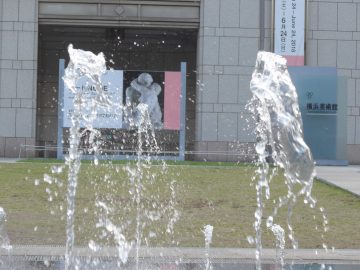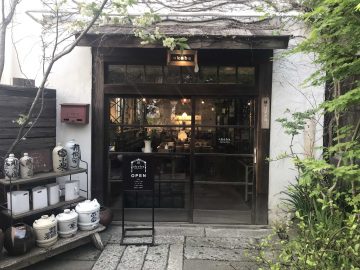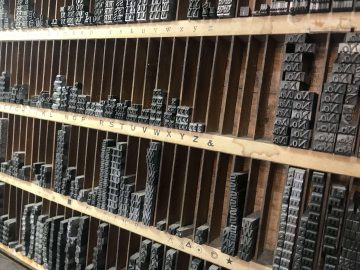Gregor Schneider Interview
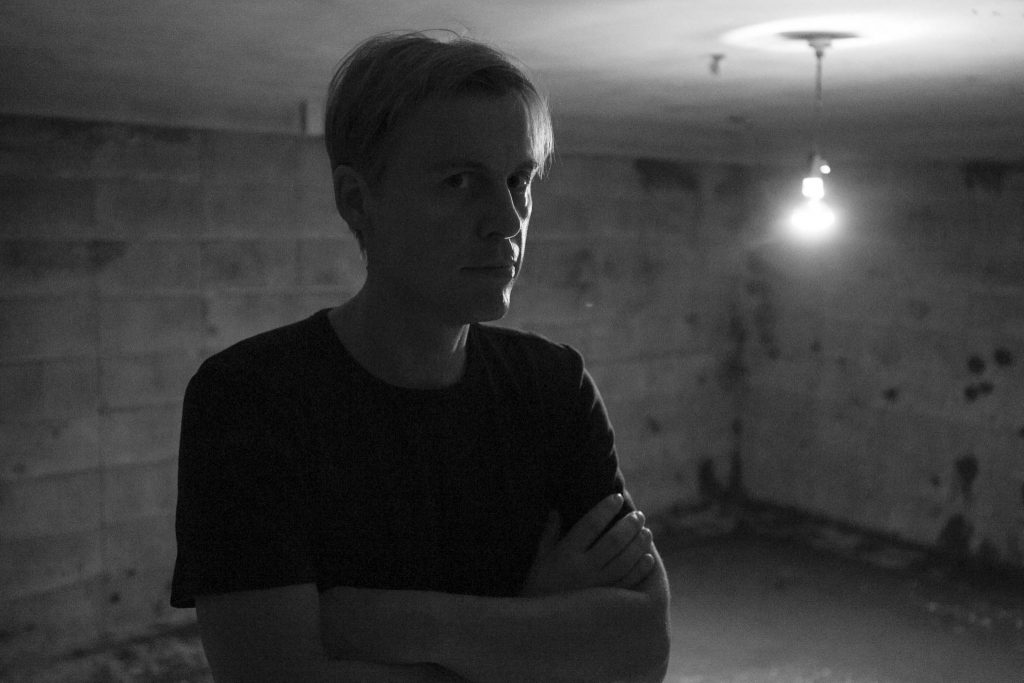
Interview: Haruo Kobayashi Text: Akiko Inoue Photo: Masamasa Nishino
The Yokohama Museum of Art is bustling with visitors as it hosts the Yokohama Triennale 2014. Now, a new and unique space has appeared in the parking lot. This is German Ungest, a work created by Gregor Schneider, a German artist known for creating "rooms," during his first visit to Yokohama.
He started making art at the age of 12, held his first solo exhibition at 16, and won the Golden Lion, the highest award, at the 49th Venice Biennale. His works often have dark images of "death," "darkness," and "shadow." It is noteworthy that his works are characterized by his unique technique of creating space itself and his peculiar obsession with the invisible.
MAGCUL.NET had the rare opportunity to interview him when he was in Japan for Yokohama Triennale 2014, and to learn about his first work , House ur 1985-today (*1) , which he says he will continue to create throughout his life, as well as his large-scale projects that have been presented around the world, and his work in Yokohama, as well as the ideas and inspirations that underlie his work. The interviewer was Haruo Kobayashi, artist and representative of blanClass.
- This is the first time I've seen your work in person, but I've seen it on the web and in magazines. I'd like to ask you a few questions, including your impressions of the works you exhibited at Yokohama Triennale 2014.
Born and raised in a mining town...
- First of all, Gregor and I are of the same generation. Of course, we grew up in different cultural backgrounds, but I felt some empathy for your approach to "rooms." I imagine that the era in which you lived influenced your perception of rooms. Is that right?
Gregor Schneider (G) : Of course, the fact that I was born and raised in a mining town called Reid in Germany has had an influence on me. Reid had a lot of unemployed people and many vacant houses, so in a sense the entire town was my studio and a place to create my works. And it was in this town, with an environment and atmosphere somewhat similar to Detroit, that my first work, House ur 1985-today, was born.
Many people came to Wright every year to mine the town, and they dug up the town with huge machinery. This caused the town to change rapidly. It's safe to say that 90% of Wright's town was destroyed after the war. In other words, mining caused more destruction than any other war in the past.
My family has been running a lead factory for five generations, and over the years there were some buildings that had fallen into disuse. The fact that we couldn't demolish them prompted us to start building "Ur House." In this way, I think it's the same for anyone, where your environment can be the catalyst for starting something.
- For example, in a city or town, there is a house as a partition, but Gregor creates a space that is further separated as a room in a nested manner from the house. First of all, please tell us about the approach to such a room itself.
G : The most important technique in my work is to replicate an existing room, either inside it or next to it. I create another room in the same space in the house, in a bedroom, kitchen, small room, etc. I continue to do this work to this day.

Let's take a look at some of the rooms in House ur.
About "House ur"
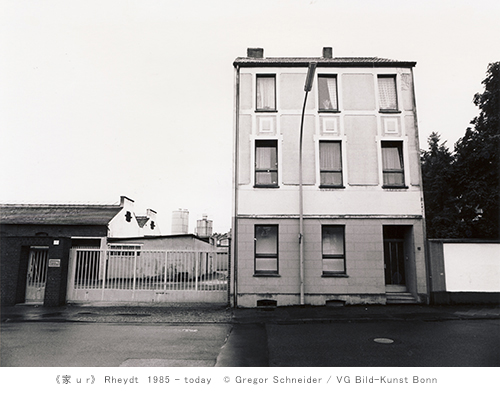
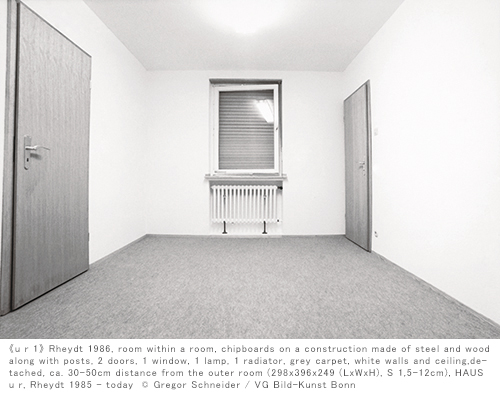
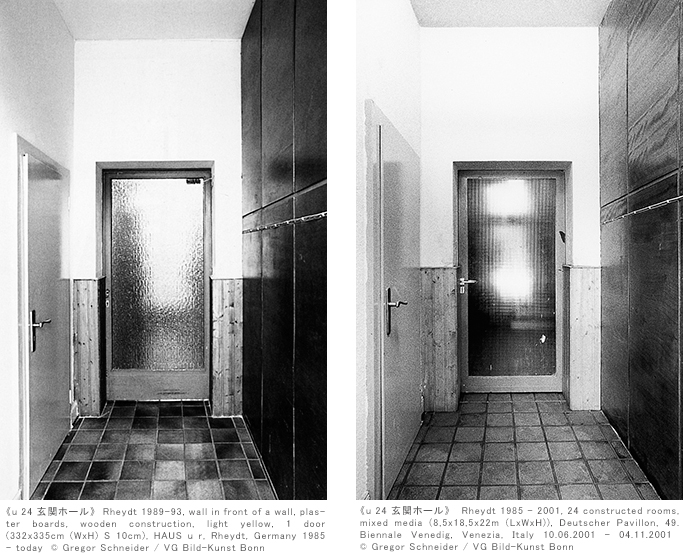
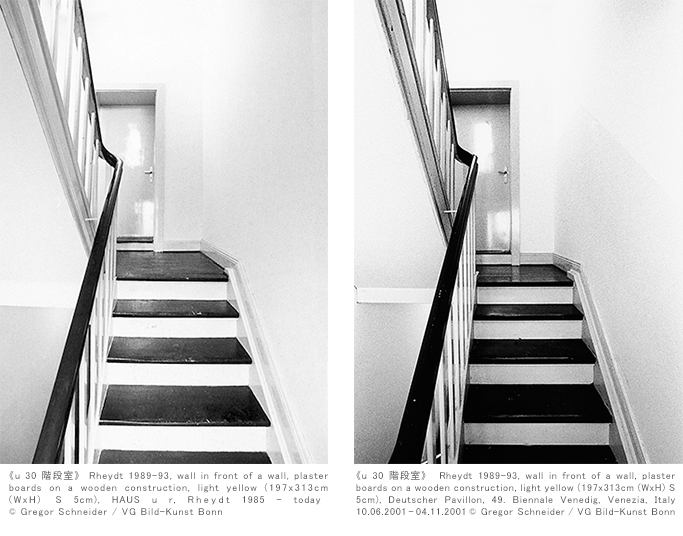
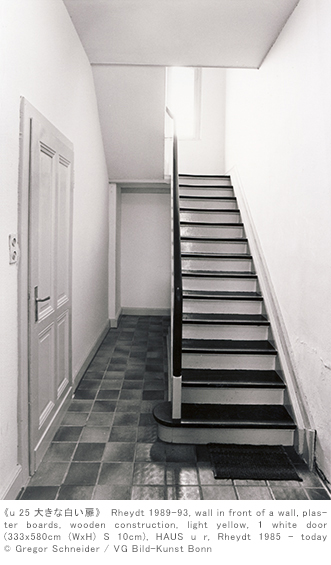
G : These are not architectural spaces, but spaces that exist within existing rooms. For me, artistically, the most important thing is to create a complete room within a room. I don't just divide the room, I replicate the whole room, including the walls, floor and ceiling. It's like an onion, where you peel off the skin and there is another skin underneath. And the viewer doesn't need to be aware of this.
- So what you just said is that conceptually, the room will stand alone as a room?
G : It depends on the work, but the rooms I create can actually be used and function as living spaces. I replicate both the form and the function. The House ur has running water and rooms where you can sleep, so you can actually live there.
In the House ur there is a room called the Coffee Room (u r10), which is designed so that if you sit down and drink coffee in it, the room will rotate once and then return to its original position. However, because it rotates very slowly, when you leave the room you will not notice that the room has been rotating.
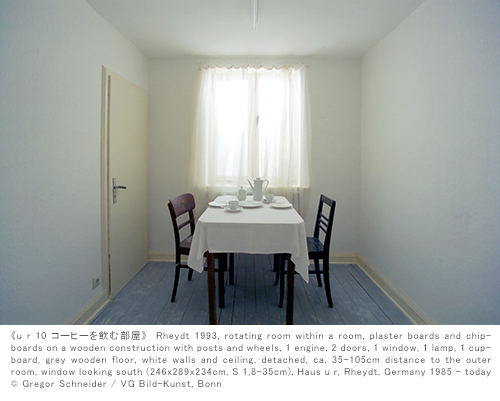
...and similarly, there is a room with a ceiling that rises and falls very slowly (5cm over 45 minutes, then 5cm down over the next 45 minutes).
The most important concept for me is to make the actual room invisible by creating a room inside another room inside that room, like an onion, so that the person there no longer thinks about the room.
- So that onion-like sensation happens inside the viewer's head?
G : I think different people will feel differently, so it's hard to generalize, but since "House ur" looks like an ordinary house from the outside, I once had an insurance salesman come and visit. I also had people who didn't know anything about it come, have coffee and cake with me, and leave without noticing anything. But in reality, they were spending time in a room surrounded by the work.
The same can be said about me. I have been living my normal life in the isolated rooms of the house ur, but I have made so many changes and renovations that even I can no longer recognize the original form of the room. For example, if I were to embed a black stone, a red stone, and a blue stone in a wall, when a day later I wonder "where did I embed them...", I find myself in front of another wall, and the situation becomes even more confusing.
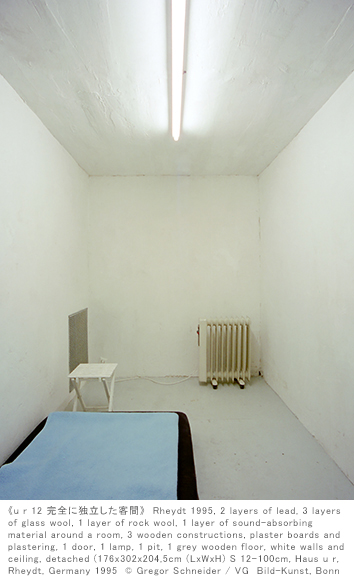
What is visible/invisible, what can be recognized/not recognized
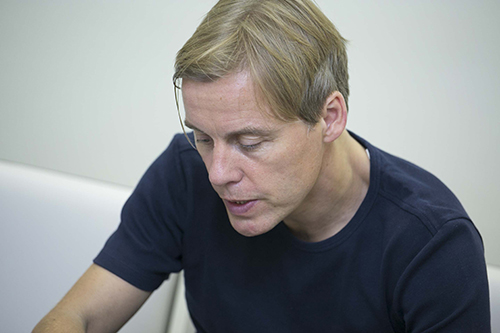
G : For example, there is a ladder at the back of this room, but you can't see it. It's something that you're creating outside the room, but you can't see it.

- Even if the room is not recognized as a work of art, I think there is something you are "setting up" for the viewer. What is it?
G : Yes, the issue here is whether it is visible or invisible, whether it can be recognized or not. A room created within a room is "visible" but not "recognized." In other words, it "sees" as an ordinary room, but it is not "recognized" as a work of art. This is the difference. In this way, my works are complex and intricate. And the situations of the visitors are various, and their thoughts about each room are also diverse. All I can say is that visitors will walk around and ask themselves, "Can this even be called a work of art?" And in the end, the question of what "art" is itself will disappear. In the end, the boundary between life and art will disappear.
- How do you perceive the work "Room"?
G : For example, when you look at a painting, you stand in front of it. When you look at a sculpture, you walk around it. But with "Room," you are surrounded by the work, and there is always something behind it, but it is invisible to your eyes. That's the difference. Also, when you create a room within a room, a shadow is cast between the wall of the original room and the wall of the new room. And the narrower the gap, the darker the shadowed area becomes. I have been doing this kind of work, that is, creating double walls and double rooms, ever since I started building "House ur" in 1985.
Then, for the 2001 Venice Biennale (*2) , he dismantled part of the House ur, which he had built in Wright's hometown, and took it to another city, Venice, where he reassembled it.
- I understand the mechanisms and the way your works exist, such as the visible/invisible, the recognizable/unrecognizable. So, are there differences in the meanings that you put into each of your works?
G : Your first work, House (ur), began as a personal act of living in a room, but since the Venice Biennale I feel that it has also taken on social and political aspects.
About "Death"
- How do you view death?
G : I see death as a matter of natural science.
There is a work called "Death Room," and the title of the work contains the meaning of a "hidden place" in architectural terms. "Tot" means "death" in German, but "Toter Raum" in this case contains the meaning of "an inaccessible place," "no exit," or "dead end."
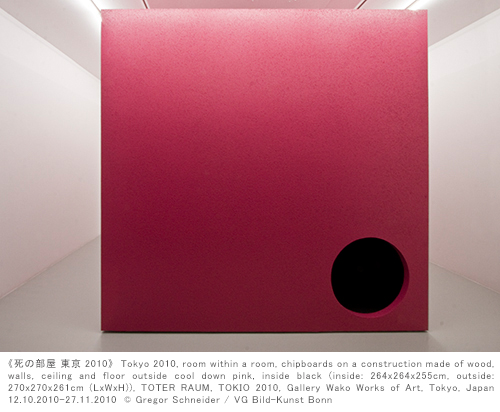
In this work, I created a "room of death" in the same way that I create a bedroom, kitchen, or bathroom. The room of death is not a special place for me; it is just one of those rooms that exist in the same general way as a bedroom or a kitchen.
What I'm trying to say is that for me there is no separation between life and art. In the room you can live, that is, you can live, and you can die. And dying is also part of living. For me dying is a sculptural act. And it is also a task that each of us inevitably undertakes.
- Is your work your own world?
G : It's not a world. My works are architectural works, concrete objects in three dimensions. And for me, a work of art cannot exist without being built. In other words, it's not a concept of a "world," but something that has to be concretely built and created in order to be called a work of art.
To build is to approach the unknown
There is a piece called "White Torture."
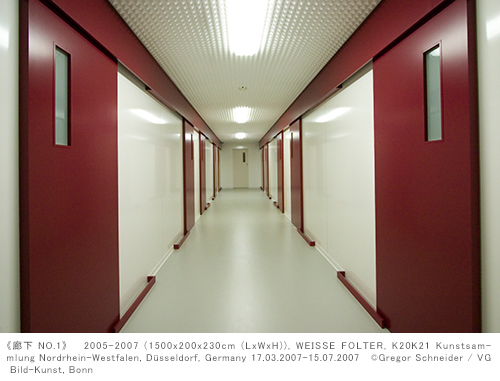
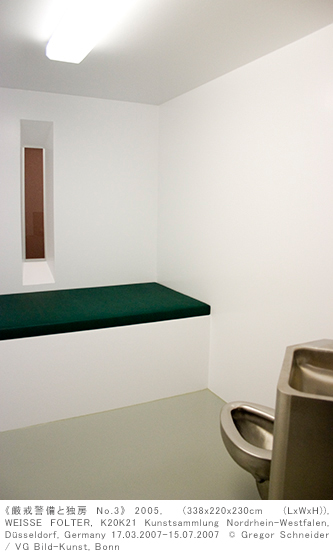
This work is a recreation of Camp #5 at the Guantanamo Bay Detention Center (※3) , which is isolated from the public eye due to its strict security, based on materials found online. In this way, I also create works of art from rooms that are inexplicable to me or that I cannot enter.
By doing this, you learn how it was made, and the second time you make it, you understand why you did what you did the first time.
You can see the torture chambers at Guantanamo Bay online, but you can't go there in person, so the only way for me as a sculptor to get close to the place is to build it based on the information I'm given.
- For you, is building the same as thinking?
G : For me, architecture is a way of completing myself, a process of trying to understand things. I have a work called "Cube" inspired by the Kaaba (*4 ) building, which was made from black stone (*5 ). By creating this work, I was able to have the physical experience of standing in front of a black stone, something that would normally be prohibited for me as a non-Muslim. This is my way of approaching the completely unknown and incomprehensible. In the case of this work, replicating a building allows me to face the subject.
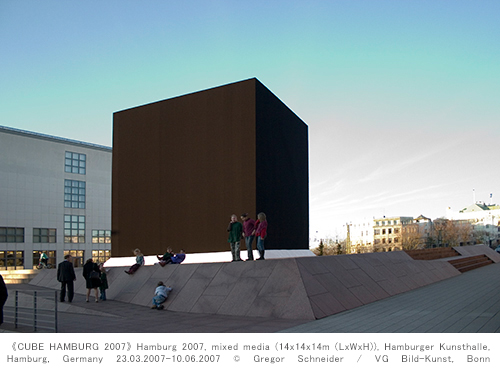
- Why do you make your installations in a kind of hidden place like that? Or why do you purposely hide the situation and show what is invisible? Is it because people can't see everything anyway?
G : It's hard to generalize because each work is different, but for me it's just that the work is there.
About the works exhibited at Yokohama Triennale 2014
- Your work, which you installed in the parking space at Yokohama Triennale 2014, felt more "closed."
G : For me, this work is something new and different from my previous works.
- One of the keywords presented by Yokohama Triennale 2014 artistic director Yasumasa Morimura is "forgetfulness." What relationship do you think there is between this keyword and the work you created in the parking lot space, "German Unquestioned"?
G : I don't know if this work has anything to do with "forgetting" because it is new for me. Also, as always, the work always absorbs itself, and starting something is an intuitive process, so I often don't understand it. In other words, I am doing something that I don't understand. It is interesting for me to come here to Yokohama and make abstract works again.
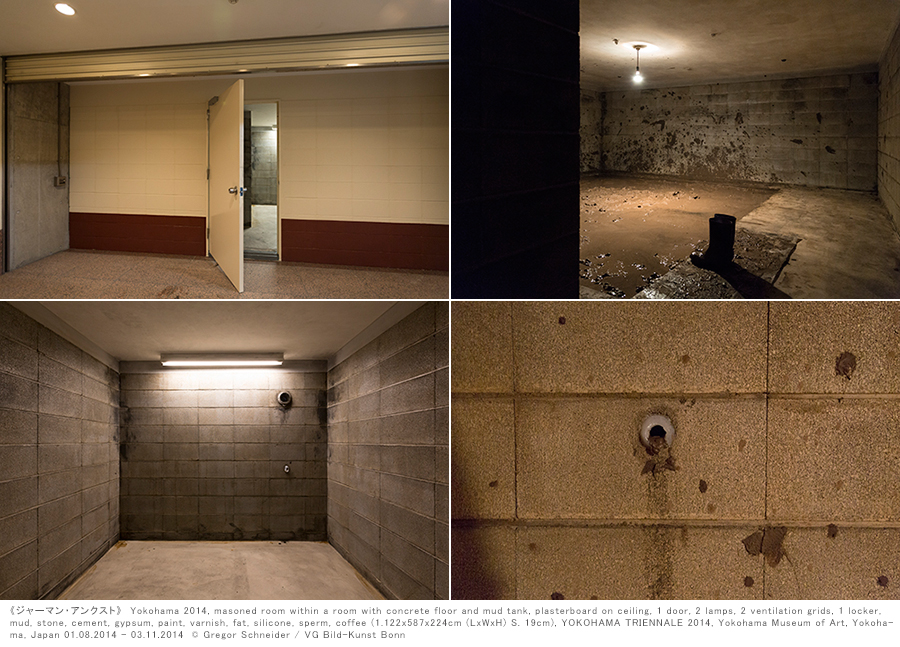
Previously, I created a space at an art museum that was accessible 24 hours a day by creating an entrance separate from the normal entrance. Since art museums are public facilities created to exhibit paintings and photographs, creating such a space is extremely difficult, but the friction that arises from achieving this is also something that interests me.
As for this work, as part of the white exhibition space of a public facility such as a museum, there is a dark, muddy space below, and the viewer can walk through it, which I think will be an interesting experience for them. (※)

[Notes]
*1 The first room (ur1) of “House ur” was built in 1985 in a building owned by his parents. He himself lived in the house while making repeated renovations.
*2 For this work, he won the Golden Lion, the highest award at the Venice Biennale.
*3 Guantanamo Bay. A US Navy base located in Guantanamo Bay in southeastern Cuba. Since January 2002 under the Bush administration, the first group of "terrorist suspects" has been held there, and it is also used as a detention center for people captured in Afghanistan and Iraq. It is known for the brutal torture methods used there, and has become a human rights issue.
*4 A shrine considered the holiest place in Islam.
*5 The keystone placed at the eastern corner of the Kaaba. An ancient sacred stone structure to which Muslims around the world face when praying.
*As of October 1st, due to facility management reasons, the experience of walking through the work is not available.
Translated by: Takae Ichimura

